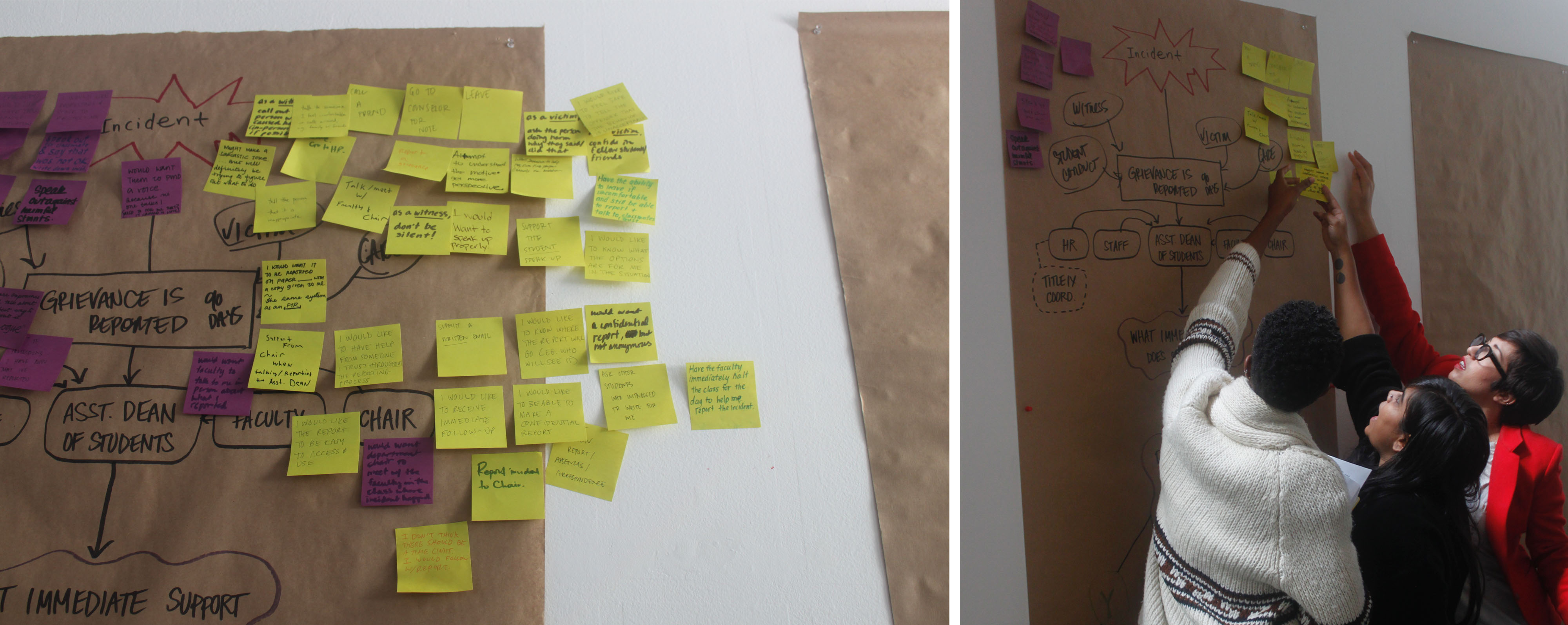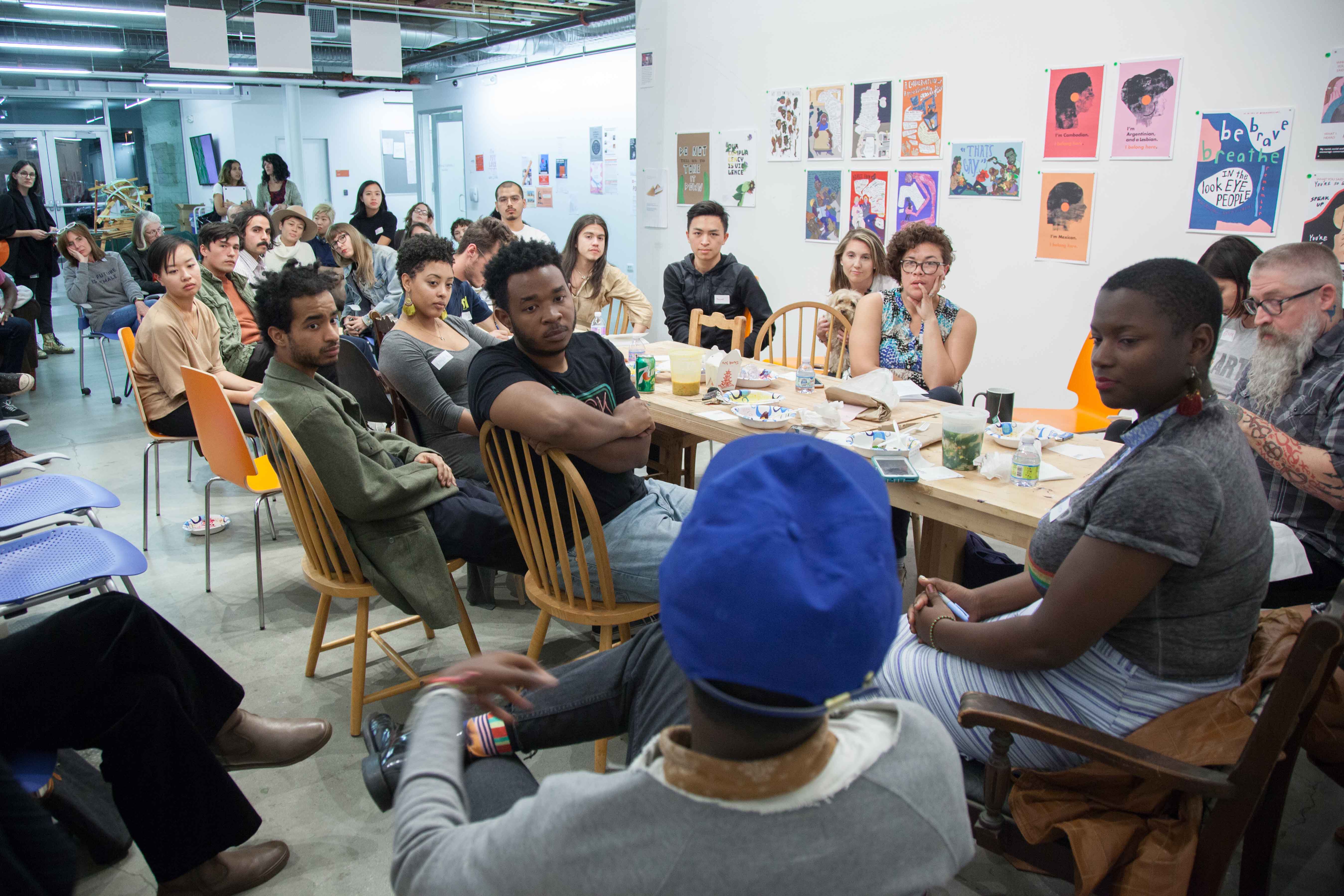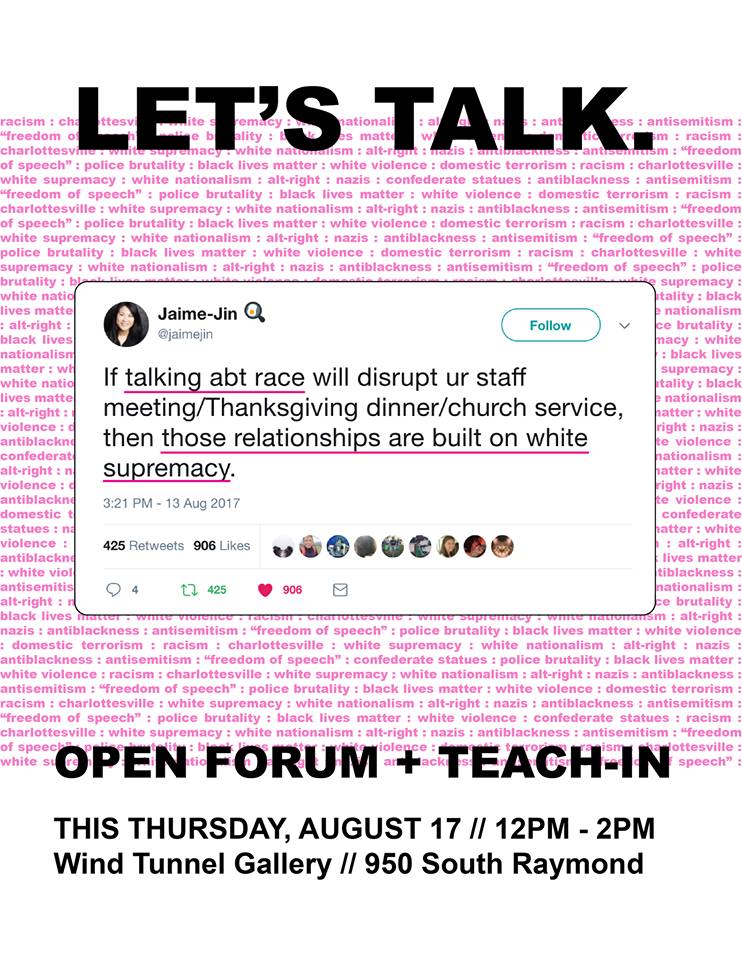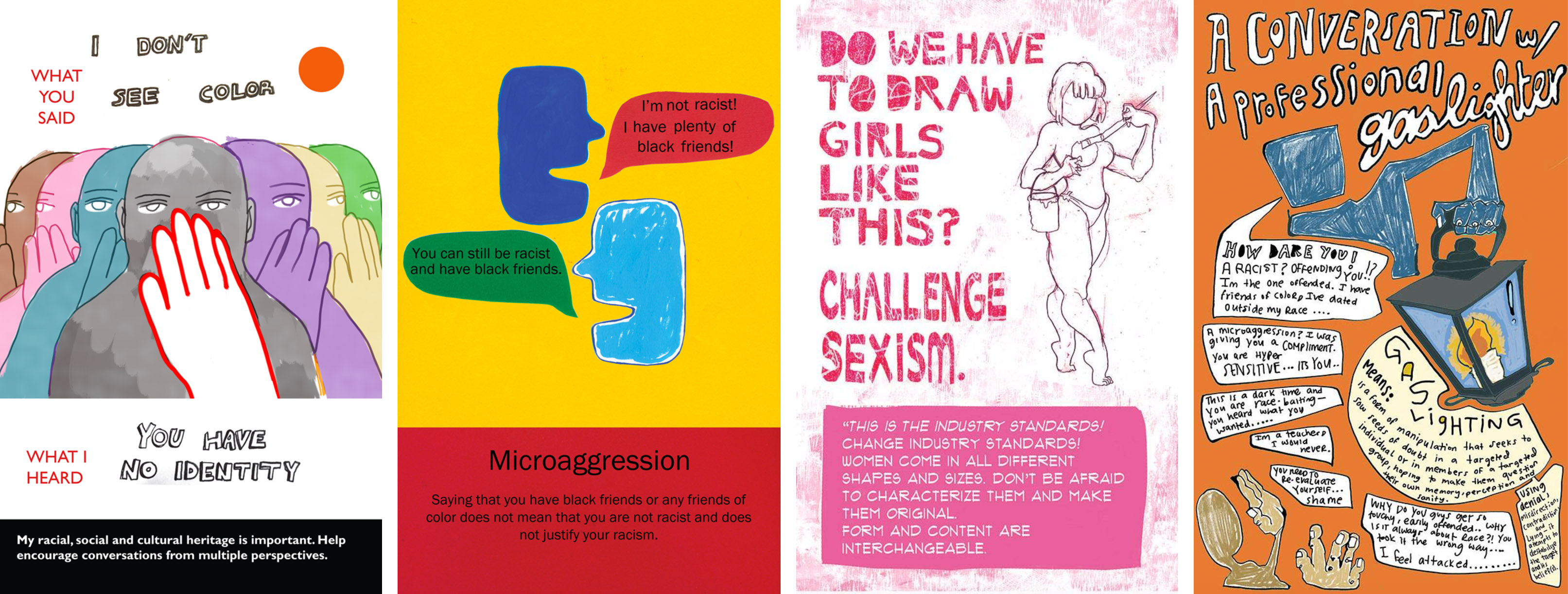ArtCenter’s Media Design Practices program encourages students to develop new practices that question and expand the role of critical design. We are encouraged to actively use design to contend with questions that challenge the validity of design, its motivations, its effects, and its limitations in different contexts : questions that design traditionally doesn’t believe to be in its scope.
In the spirit of this type of inquiry, we started the student-run organization, The Antiracist Classroom, to create a space for students who want to find, create, and engage in opportunities for activism around issues of racism and white supremacy in the classroom and in design practices.
The Evolution of the Antiracist Classroom
In August 2017, MDP faculty member Elizabeth Chin hosted a teach-in to publicly address the acts of domestic terrorism and violence led by white supremacists in Charlottesville. Afterwards, we wanted to capture the energy and urgency in the room and continue this important and productive conversation. So, we named the group the “Antiracist Classroom” and asked: how might we further develop critical community conversation about racial equity and discrimination through design and art?
Since then, our primary goal has been to cultivate a series of opportunities for students of color to engage with and through art, design, media and/or technology in ways that ignite and sustain a movement toward a more racially equitable, informed, and carefully-considered learning environment at Art Center. We have also worked to include faculty and staff who want to participate, learn more about allyship, and act as resources to their students, especially students of color who encounter racism in the classroom and in their experience as designers.
Though we’d like to say we’ve followed a carefully calculated plan to achieve these goals, that’s not quite the case. Instead, we’ve thoughtfully felt our way through a number of different attempts throughout the term, learning a little more about our approaches, ourselves, and the institution each time. In general, we’ve tried to leverage “research through design:” a combination of applied practices that culminate in outcomes such as a designed interactions, methods, objects, and experiences. These designed efforts, led by students of color who have taken it upon ourselves to challenge and craft the kind of environment in which we want to learn, have manifested in the form of discussions, workshops, and calls for work.
An Experimental Event: a Call for Posters
Our most recent program was a call for posters, exhibit and critique. This event was inspired by the revelation that many students and faculty don’t feel equipped to respond when they experience or witness overt racist behavior or microaggressions, both in and outside of the classroom. This came to light through repeated group forums and after conducting a group mapping exercise to unpack ArtCenter’s student grievance reporting system. It became clear that students of color experience race-related microaggressions often and that varying levels of vocabulary, confidence, and comfort influence students’ abilities to express how they feel and how it impacts their work. The convergence of this insight, pre-existing plans to host a critique workshop for student work, and a group member’s desire to create a poster series, led to our next initiative. What if we could generate potential responses to microaggressions that would help students of color imagine a way forward? We hosted an open call to creatives—from students and semi-professionals to professionals—between October and November 2017. Participants were invited to design a poster that responded to the following prompt: What tools, strategies or approaches might you use to interrupt or counteract microaggressions?

Students creating a system and user map together to better understand ArtCenter’s current student grievance reporting system.
On Tuesday, November 14, The Antiracist Classroom convened at “The Spot” in Art Center’s Fine Art & Illustration building: a student-run space first occupied by Joanne Lee and Bryan Ortega in direct response to censorship and silencing of student voices at Art Center. About forty students, faculty, and locals gathered to discuss the 37 submitted posters as provocative conversation objects. The artists who responded to the call were joined by four guest facilitators: Kenyatta A.C. Hinkle, Maceo Paisley, Sue Bell Yank, and Michelle Ann Mathews, and together they led the evening’s discourse around exploring microaggressions and racial identity in art and design. By the end of the night, many participants expressed enthusiasm and gratitude for what this event had offered them, whether it was cultivating a space to hold often-avoided conversations or hearing relatable voices and language that resonated with their own, unspoken experiences. This event exemplifies a “research through design” approach: artists made artifacts that inspired critical discourse between themselves, their work and the social environment that their artifact influences.
What We Learned
The call for posters was an experiment in engaging artists through a medium with which they’re already familiar to drive a dialogue that is relatively uncommon in this environment. While this event was energizing, encouraging, and productive, we’re still exploring more sustaining ways to engage the ArtCenter community in the long term. As we try out new programs in the future, here are some of the lessons we’ll take with us from this event:
- Half of the battle when addressing microaggressions is being able to recognize what they are in the first place. Many submissions were depictions of microaggressions, this helped define the breadth of contexts in which they take place: in the classroom, solidified into curriculum and assignments, in passing conversation, or even on a coffee cup. If we had to define the outcomes of this event in design terminology, we could say that it generated a morphology of microaggressions: a necessary pre-condition for defining the different modes of response.
- Spatial dynamics play a critical role in setting the tone for the conversation. As we rearranged the tables just before guests arrived, we decided to place them in the center of the room like a long dinner table. Framing the room in this way afforded attendees, facilitators, faculty, and students alike, a seat at the table—literally—in a way that wouldn’t have been possible if we were all standing around in the scattered style we so often see at critiques. In this arrangement, authority was dispersed around the room rather than being centralized and elevated on a pedestal.
- Faculty have immense influence over their classrooms in ways that allow them to incrementally shape institutional culture. In addition to the open call, the prompt was adopted by Esther Pearl Watson as an assignment in her Smart Image + Social Impact Class. This faculty support was encouraging because it demonstrates that teachers who are willing to insert these kinds of narratives into their own courses might begin to formalize and sustainably transform classrooms into learning environments where students can safely examine ways to explore their own identities and deconstruct racism through their practice. Esther’s willingness to center an assignment around this call for posters is crucial because it sends the message to students and other faculty that race, racism, and microaggressions are topics worthy of students’ attention and as subjects of their work.
As we advance our work together we hope to continue to build community and occupy physical and virtual space through events, media (e.g. publications, books, student work) and ongoing conversations that equip more students of color to produce and document art, design, media, technology and writing that supports and represents their unique experiences.


